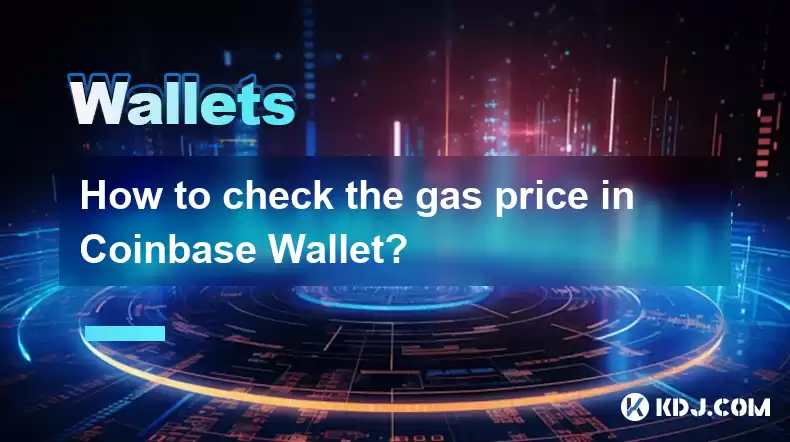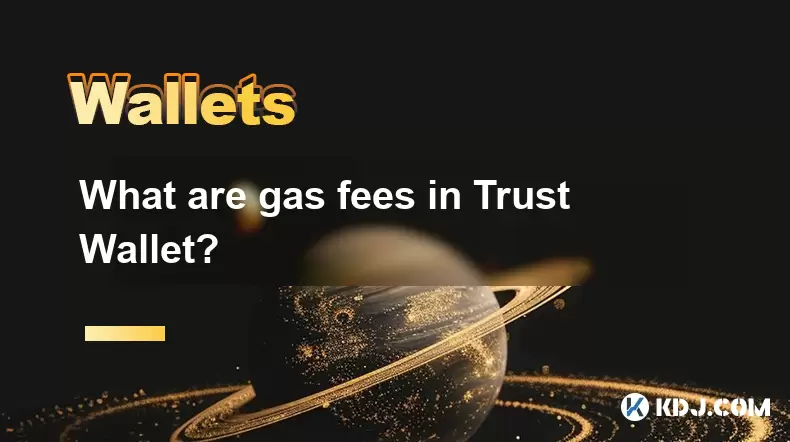-
 Bitcoin
Bitcoin $114400
1.32% -
 Ethereum
Ethereum $3499
2.20% -
 XRP
XRP $2.922
4.26% -
 Tether USDt
Tether USDt $0.0000
0.03% -
 BNB
BNB $752.6
1.53% -
 Solana
Solana $161.8
1.64% -
 USDC
USDC $0.9999
0.01% -
 TRON
TRON $0.3267
1.32% -
 Dogecoin
Dogecoin $0.1991
3.02% -
 Cardano
Cardano $0.7251
3.29% -
 Hyperliquid
Hyperliquid $38.32
3.36% -
 Stellar
Stellar $0.3972
7.58% -
 Sui
Sui $3.437
2.74% -
 Chainlink
Chainlink $16.29
3.65% -
 Bitcoin Cash
Bitcoin Cash $545.3
3.70% -
 Hedera
Hedera $0.2482
7.49% -
 Ethena USDe
Ethena USDe $1.001
0.03% -
 Avalanche
Avalanche $21.40
2.02% -
 Toncoin
Toncoin $3.579
1.56% -
 Litecoin
Litecoin $109.3
2.20% -
 UNUS SED LEO
UNUS SED LEO $8.951
-0.18% -
 Shiba Inu
Shiba Inu $0.00001220
2.75% -
 Polkadot
Polkadot $3.613
2.99% -
 Uniswap
Uniswap $9.173
3.78% -
 Monero
Monero $302.6
2.62% -
 Dai
Dai $0.0000
0.00% -
 Bitget Token
Bitget Token $4.320
1.52% -
 Pepe
Pepe $0.00001048
3.40% -
 Cronos
Cronos $0.1314
4.33% -
 Aave
Aave $259.4
3.54%
How to check the gas price in Coinbase Wallet?
To check gas prices on Ethereum via Coinbase Wallet, initiate a transaction, view the gas fee, and adjust if needed; prices fluctuate, so check before confirming.
Apr 26, 2025 at 01:22 am

Checking the gas price in Coinbase Wallet is an essential task for anyone looking to make transactions on the Ethereum network. Understanding the gas price can help you optimize your transaction costs and speed. In this guide, we will walk you through the detailed steps to check the gas price in Coinbase Wallet, ensuring you have all the information you need to proceed confidently.
Accessing Coinbase Wallet
To begin, you need to have the Coinbase Wallet installed on your device. Coinbase Wallet is available for both iOS and Android devices, as well as a browser extension for Chrome and Brave.
- Open the Coinbase Wallet app on your mobile device or the extension on your browser.
- Log in to your wallet using your password or biometric authentication if enabled.
Navigating to the Send/Receive Section
Once you are logged in, you need to navigate to the section where you can send or receive Ethereum or other ERC-20 tokens.
- Tap on the "Send" or "Receive" button at the bottom of the screen in the mobile app, or click on the respective icons in the browser extension.
- Select Ethereum (ETH) as the cryptocurrency you wish to transact with. This is crucial because gas prices are relevant only for transactions on the Ethereum network.
Initiating a Transaction
To check the gas price, you need to initiate a transaction. This doesn't mean you have to complete the transaction; you can cancel it later if needed.
- Enter the recipient's Ethereum address in the "To" field.
- Input the amount of ETH you wish to send in the "Amount" field. You can enter a small amount if you are just checking the gas price.
Viewing the Gas Price
After entering the transaction details, the Coinbase Wallet will automatically calculate the gas price and display it for you.
- Look for the "Gas Fee" or "Transaction Fee" section on the confirmation screen. This section will show you the estimated gas price in gwei, which is the unit used to measure gas on the Ethereum network.
- The gas fee will be displayed in both gwei and the equivalent amount in ETH. This helps you understand the cost of the transaction in terms of the cryptocurrency you are using.
Adjusting the Gas Price
If you find the default gas price too high or too low for your needs, you can adjust it manually.
- Tap on the "Gas Fee" section to open the gas settings.
- Slide the gas price slider to increase or decrease the gas price. A higher gas price will result in a faster transaction, while a lower gas price will be cheaper but may take longer to process.
- Review the new gas fee and decide if it suits your transaction needs.
Confirming the Transaction
Once you are satisfied with the gas price, you can proceed to confirm the transaction.
- Review all the transaction details, including the recipient's address, the amount of ETH, and the gas fee.
- Tap on "Confirm" to initiate the transaction. If you were only checking the gas price, you can cancel the transaction at this point without incurring any costs.
Understanding Gas Price Fluctuations
It's important to understand that gas prices can fluctuate based on network congestion.
- Check the current network status using Ethereum network monitoring tools like Etherscan or Eth Gas Station. These tools provide real-time data on gas prices and network congestion.
- Be aware that gas prices can change rapidly, so it's a good practice to check the gas price just before confirming your transaction.
Additional Tips for Managing Gas Prices
Here are some additional tips to help you manage gas prices effectively:
- Use gas price prediction tools like GasNow, which can help you estimate the optimal gas price for your transaction.
- Consider using layer 2 solutions like Optimism or Polygon, which can significantly reduce gas fees for certain transactions.
- Batch transactions whenever possible. If you need to make multiple transactions, combining them into a single transaction can save on gas costs.
Frequently Asked Questions
Q: Can I check the gas price without initiating a transaction in Coinbase Wallet?
A: Currently, Coinbase Wallet does not provide a feature to check the gas price without initiating a transaction. You need to start a transaction to see the estimated gas fee.
Q: Does Coinbase Wallet automatically adjust the gas price for me?
A: Yes, Coinbase Wallet automatically sets a default gas price based on current network conditions. However, you can manually adjust this price if you prefer.
Q: How often should I check the gas price before making a transaction?
A: It's recommended to check the gas price just before confirming your transaction, as prices can change rapidly due to network congestion.
Q: Are there any risks associated with setting a very low gas price?
A: Yes, setting a very low gas price can result in your transaction being delayed or never processed. It's a balance between cost and speed, and you should consider the urgency of your transaction when setting the gas price.
Disclaimer:info@kdj.com
The information provided is not trading advice. kdj.com does not assume any responsibility for any investments made based on the information provided in this article. Cryptocurrencies are highly volatile and it is highly recommended that you invest with caution after thorough research!
If you believe that the content used on this website infringes your copyright, please contact us immediately (info@kdj.com) and we will delete it promptly.
- Cold Wallet vs. MetaMask: A Web3 Wallet Revolution?
- 2025-08-04 06:30:12
- Chainlink Price Prediction: Bearish Continuation or a Bullish Reversal?
- 2025-08-04 06:35:12
- Bitcoin Price Wobbles: Options Analysis Points to Bullish Undercurrent Despite Dip
- 2025-08-04 04:30:12
- Ark Invest, Coinbase, and Bitcoin: Decoding the Crypto Investment Landscape in NYC
- 2025-08-04 04:30:12
- Ruvi AI: CoinMarketCap Listing and Audited Token Status Spark Investor Frenzy
- 2025-08-04 05:30:12
- BlockDAG, Cryptos 2025, and Live Exchange: What's Hot and What's Not
- 2025-08-04 05:50:11
Related knowledge

What is a watch-only wallet in Trust Wallet?
Aug 02,2025 at 03:36am
Understanding the Concept of a Watch-Only WalletA watch-only wallet in Trust Wallet allows users to monitor a cryptocurrency address without having ac...

How to fix a stuck pending transaction in Trust Wallet?
Aug 03,2025 at 06:14am
Understanding Why Transactions Get Stuck in Trust WalletWhen using Trust Wallet, users may occasionally encounter a pending transaction that appears t...

What is a multi-coin wallet in Trust Wallet?
Aug 03,2025 at 04:43am
Understanding Multi-Coin Wallets in Trust WalletA multi-coin wallet in Trust Wallet refers to a digital wallet that supports multiple cryptocurrencies...

How to switch between networks in Trust Wallet?
Aug 02,2025 at 12:36pm
Understanding Network Switching in Trust WalletSwitching between networks in Trust Wallet allows users to manage assets across different blockchains s...

How to check my full transaction history on Trust Wallet?
Aug 02,2025 at 09:24am
Understanding Transaction History in Trust WalletTrust Wallet is a widely used non-custodial cryptocurrency wallet that supports a broad range of bloc...

What are gas fees in Trust Wallet?
Aug 04,2025 at 06:14am
Understanding Gas Fees in Trust WalletGas fees in Trust Wallet refer to the transaction costs required to execute operations on a blockchain network. ...

What is a watch-only wallet in Trust Wallet?
Aug 02,2025 at 03:36am
Understanding the Concept of a Watch-Only WalletA watch-only wallet in Trust Wallet allows users to monitor a cryptocurrency address without having ac...

How to fix a stuck pending transaction in Trust Wallet?
Aug 03,2025 at 06:14am
Understanding Why Transactions Get Stuck in Trust WalletWhen using Trust Wallet, users may occasionally encounter a pending transaction that appears t...

What is a multi-coin wallet in Trust Wallet?
Aug 03,2025 at 04:43am
Understanding Multi-Coin Wallets in Trust WalletA multi-coin wallet in Trust Wallet refers to a digital wallet that supports multiple cryptocurrencies...

How to switch between networks in Trust Wallet?
Aug 02,2025 at 12:36pm
Understanding Network Switching in Trust WalletSwitching between networks in Trust Wallet allows users to manage assets across different blockchains s...

How to check my full transaction history on Trust Wallet?
Aug 02,2025 at 09:24am
Understanding Transaction History in Trust WalletTrust Wallet is a widely used non-custodial cryptocurrency wallet that supports a broad range of bloc...

What are gas fees in Trust Wallet?
Aug 04,2025 at 06:14am
Understanding Gas Fees in Trust WalletGas fees in Trust Wallet refer to the transaction costs required to execute operations on a blockchain network. ...
See all articles

























































































